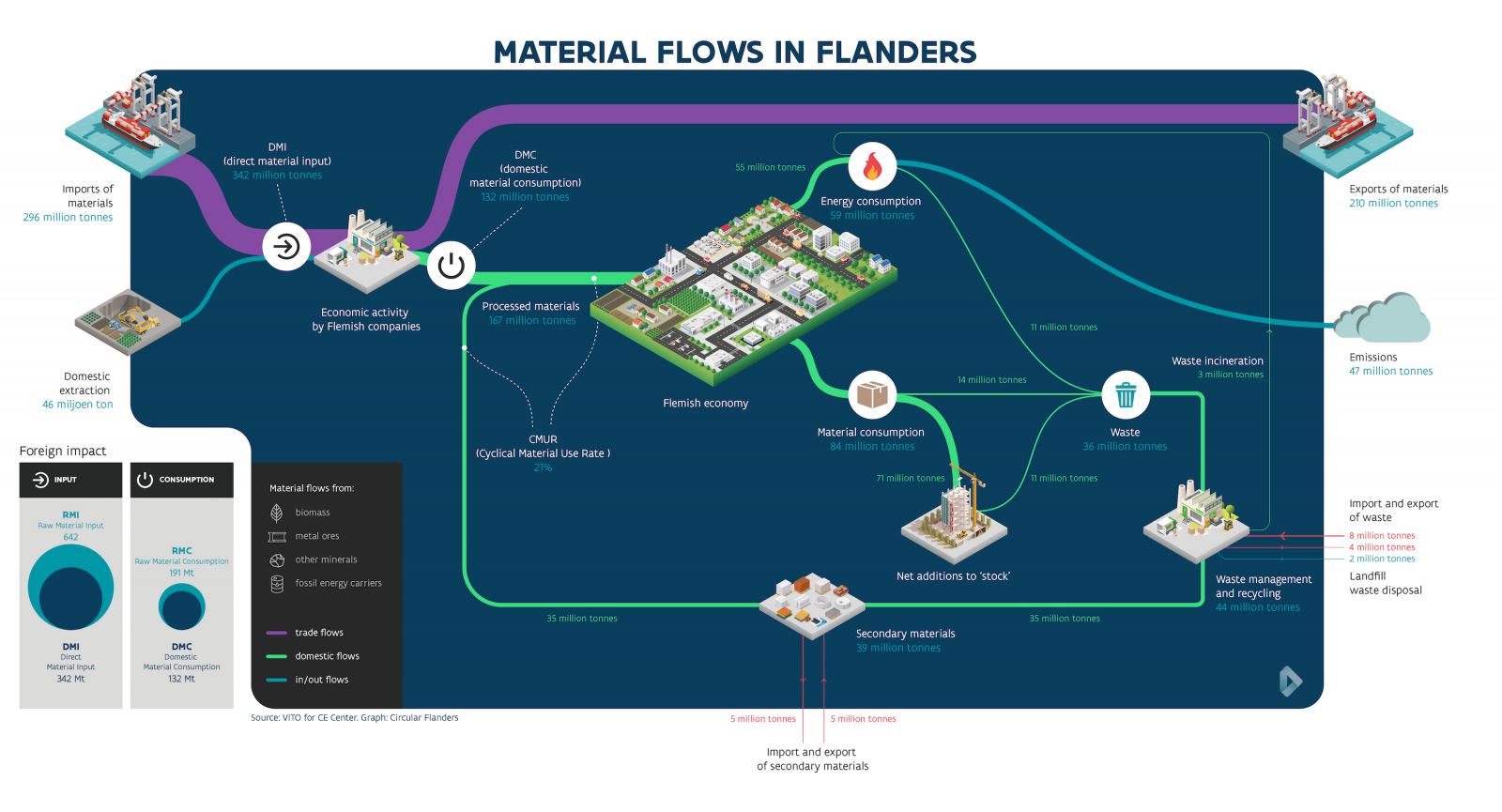Circular Ports
Circular Ports
Topics
Circular Port Monitor
Explore this topic
Delta Atelier
Explore this topic
How circular is the Flemish economy?
21%. That is the short answer to the question of how circular the Flemish economy is.
It is the circularity figure (cyclical material use rate – CMUR) for Flanders in 2018. In 2014 this was 16%: we therefore seem to be making progress, mainly due to increased recycling.
CMUR = tonnes of secondary origin / (tonnes of total domestic consumption) + tonnes of secondary origin)
The long answer, of course, is more nuanced
The circularity of the Flemish economy cannot actually be summed up in a single figure. Because of the underlying calculations, each figure has its own strengths and weaknesses. Just like the gross domestic product (GDP): this would increase, for example, if we all bought a new smartphone with increasing frequency and discarded our old ones, but the figure says nothing about unwanted effects such as the associated mountain of waste or missed opportunities for an upgrade or repair. Simply aiming for a higher GDP, without knowing the underlying dynamics, is therefore not healthy. This also applies to indices such as the CMUR.
Limitation 1: Our impact abroad is not included. The following applies to the CMUR: the lower the domestic consumption, the higher the figure. This domestic consumption only refers to materials that we use here. The figure therefore does not take into account any tonnes of material that cause our consumption ‘upstream’ abroad. So if we increasingly outsource the production of biomass (wood, crops…), and the production of ores and heavy industrial activities to foreign countries and only use the (light) finished products here, our circularity figure increases, even though we have actually done nothing more circular.
Limitation 2: the quality of recycling is not included. The CMUR only looks at weight and does not take into account the quality of recycling. Whether we grind our old bricks into tennis courts (low-grade recycling) or reuse them as bricks in new buildings (high-quality reuse), it doesn’t matter to the CMUR. One tonne of tennis court clay is equal to one tonne of bricks.
To get a thorough picture of the circularity of our economy, we should therefore look deeper. We do this by looking step by step at the materials accounting of the Flemish economy. We summarise this in the diagram below.

.png)

Latest Update 09-12-2022
.png)